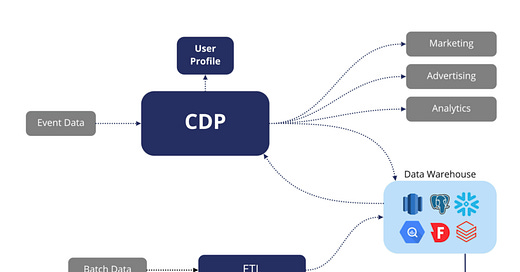Analytical Claustrophobia (Or Customer Data Platform) - Issue 91
Or how to make a sandwich in 587 steps.
Hello analysts, hope you are well. I’m back as usual with prepared insights for you in this week’s Data Analysis Journal, an advice column about data and product analytics.
If you’re not a paid subscriber, here’s what you missed this month:
This Is Why You Over-Count Your Daily Active Users - an explanation of why you are most likely over-reporting your DAU and MAU metrics, especially if you leverage Amplitude for analytics. A walkthrough of why activity reporting is tricky, what the common pitfalls are, and proposed recommendations on how to make your DAU cleaner and more accurate.
5 Must-Have Board Slides For Sales and Revenue Leaders - read if you are lucky enough to put together decks reporting growth and revenue for an audience of executives. I review examples of effective slides, and the deck structure that works, and share expert recommendations.
User Research - Get To Know Your Users and Their Motives - an introduction to qualitative analysis, the intersection of data analytics, marketing, and design. Its methods, practice, and how the data team can support user research effectively. The difference between qualitative and quantitative analysis, and why you have to leverage both for analytics.
Today I will thrill you with a popular and mildly controversial topic - Customer Data Platform. It is one of the most well-selling data products on the market, and I am about to tell you why it’s not always effective and might actually be damaging to your data-driven organization.
Keep reading with a 7-day free trial
Subscribe to Data Analysis Journal to keep reading this post and get 7 days of free access to the full post archives.




